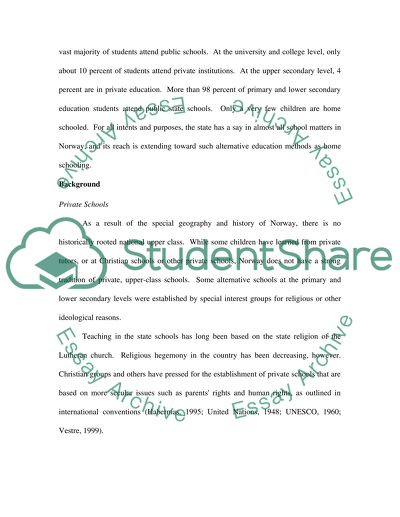Cite this document
(“The Montessori pedagogy. Why has it become so popular in Norway when Essay”, n.d.)
The Montessori pedagogy. Why has it become so popular in Norway when Essay. Retrieved from https://studentshare.org/miscellaneous/1538886-the-montessori-pedagogy-why-has-it-become-so-popular-in-norway-when-private-schools-are-being-established
The Montessori pedagogy. Why has it become so popular in Norway when Essay. Retrieved from https://studentshare.org/miscellaneous/1538886-the-montessori-pedagogy-why-has-it-become-so-popular-in-norway-when-private-schools-are-being-established
(The Montessori Pedagogy. Why Has It Become so Popular in Norway When Essay)
The Montessori Pedagogy. Why Has It Become so Popular in Norway When Essay. https://studentshare.org/miscellaneous/1538886-the-montessori-pedagogy-why-has-it-become-so-popular-in-norway-when-private-schools-are-being-established.
The Montessori Pedagogy. Why Has It Become so Popular in Norway When Essay. https://studentshare.org/miscellaneous/1538886-the-montessori-pedagogy-why-has-it-become-so-popular-in-norway-when-private-schools-are-being-established.
“The Montessori Pedagogy. Why Has It Become so Popular in Norway When Essay”, n.d. https://studentshare.org/miscellaneous/1538886-the-montessori-pedagogy-why-has-it-become-so-popular-in-norway-when-private-schools-are-being-established.


